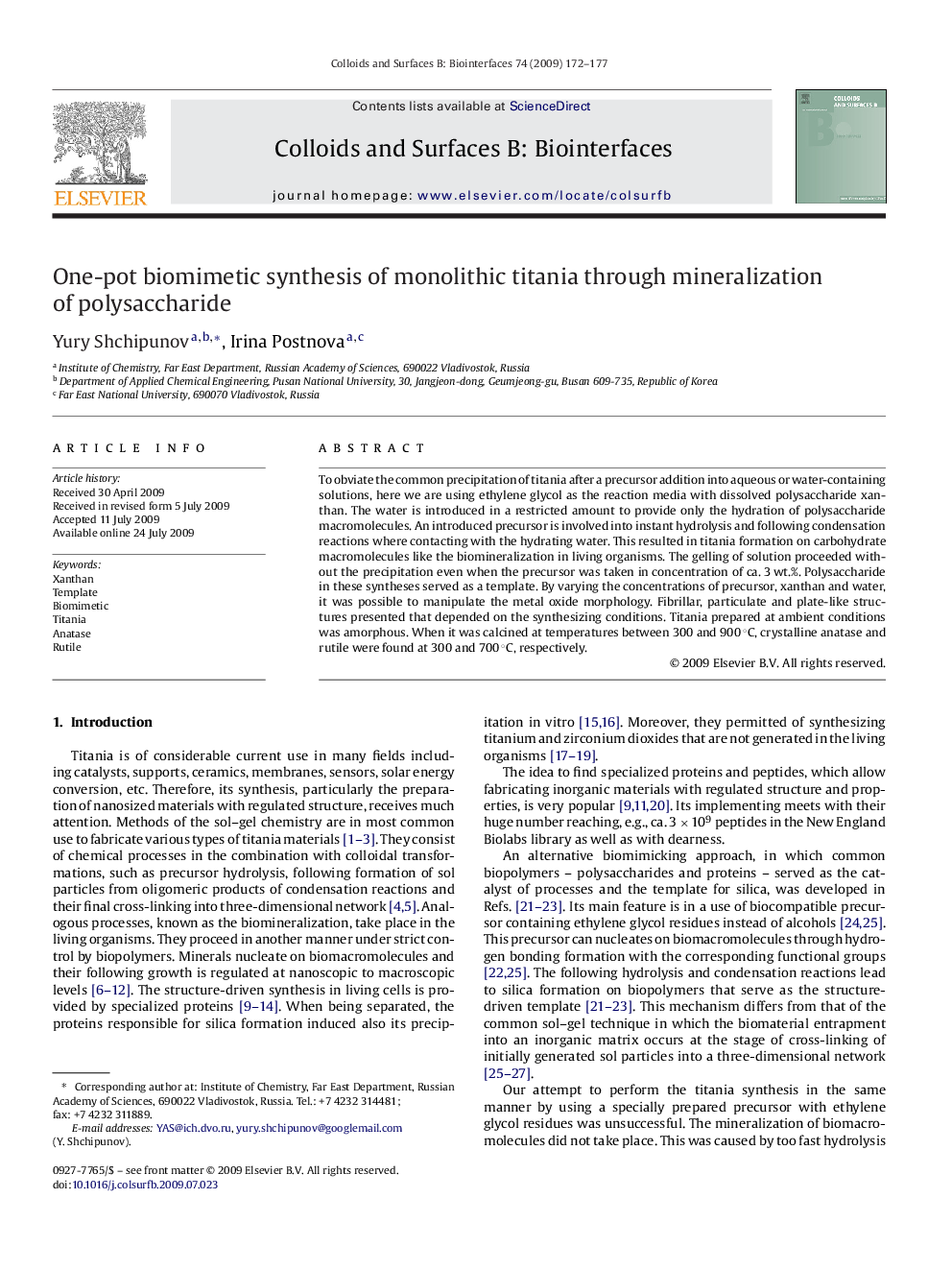| Article ID | Journal | Published Year | Pages | File Type |
|---|---|---|---|---|
| 601822 | Colloids and Surfaces B: Biointerfaces | 2009 | 6 Pages |
To obviate the common precipitation of titania after a precursor addition into aqueous or water-containing solutions, here we are using ethylene glycol as the reaction media with dissolved polysaccharide xanthan. The water is introduced in a restricted amount to provide only the hydration of polysaccharide macromolecules. An introduced precursor is involved into instant hydrolysis and following condensation reactions where contacting with the hydrating water. This resulted in titania formation on carbohydrate macromolecules like the biomineralization in living organisms. The gelling of solution proceeded without the precipitation even when the precursor was taken in concentration of ca. 3 wt.%. Polysaccharide in these syntheses served as a template. By varying the concentrations of precursor, xanthan and water, it was possible to manipulate the metal oxide morphology. Fibrillar, particulate and plate-like structures presented that depended on the synthesizing conditions. Titania prepared at ambient conditions was amorphous. When it was calcined at temperatures between 300 and 900 °C, crystalline anatase and rutile were found at 300 and 700 °C, respectively.
